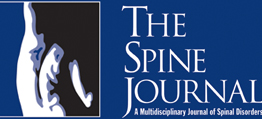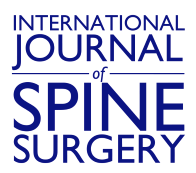
Abstract
BACKGROUND CONTEXT: While single-level cervical total replacement has been studied extensively, high quality literature on multilevel TDR with long-term results is lacking. Past studies suggest significant biomechanical and clinical differences may exist between TDR and ACDF patients.
PURPOSE: To evaluate the safety and effectiveness of 2-level TDR in comparison to an ACDF control group for the treatment of cervical degenerative disc disease through 7 years of follow-up.
STUDY DESIGN/SETTING: Prospective, randomized, multicenter concurrently controlled FDA clinical trial conducted across 24 sites in the US.
PATIENT SAMPLE: The patient population consisted of 330 patients randomized in a 2:1 ratio to receive TDR (225 patients) or ACDF (105 patients). Inclusion criteria included a diagnosis of symptomatic cervical degenerative disease at two contiguous levels and no history of previous operations on the cervical spine.
OUTCOME MEASURES: Measures outcomes included Neck Disability Index (NDI), VAS neck and arm pain, segmental range of motion (ROM), patient satisfaction, SF-12 MCS/PCS, major complications, subsequent surgery rate, and overall success rate.
METHODS: TDR patients were treated using the Mobi-C© artificial disc (LDR Spine, Austin TX, USA). ACDF with allograft and anterior plate was used as a control treatment. Outcome measures were collected preoperatively and postoperatively at 6 weeks, at 3, 6, 12, 18 months, annually through 60 months, and at 84 months.
RESULTS: AT 7 years, data were available for 172 TDR patients and 63 ACDF patients. Follow-up at 84 months was 84.3% for TDR and 75.9% for ACDF. The overall success analysis demonstrated superiority of the TDR over ACDF. The overall success rates of TDR and ACDF patients were 60.8% and 34.2%, respectively (p,.0001). Both the TDR and the ACDF group showed significant improvement from baseline NDI scores, VAS neck and arm pain scores, and SF-12 MCS/PCS scores (p<.0001). The mean improvement for baseline NDI scores were significantly greater than the TDR group compared to the ACDF group (TDR: 35.7±19.9 vs ACDF: 27.8±21.8, p=.007). The NDI success rate was also significantly greater in the TDR group (TDR: 79.3% vs ACDF: 58.8%, p=.001). Mean improvement in VAS neck pain score was 51.3±30.6 for the TDR patients and 43.4±34.2 for the ACDF patients. Mean segmental ROM was maintained in the TDR group. The TDR group has a significant higher rate of patients who were “very satisfied” with their treatment compared to the ACDF group (TDR: 85.9% vs ACDF: 73.9%, p=.04). TDR patients had a mean improvement in SF-12 scores of 10.4±12.8(MCS) and 13.0±10.8 (PCS) while the ACDF group had a mean improvement of 7.2±14.3 (MCF) and 10.3±11.4 (PCS). The subsequent surgery rate was significantly lower for the TDR group compared to the ACDF group (TDR: 4.9% vs ACDF: 16.2%, p=.001). The 7-year rate of adverse events was 5.3% fir TDR patients and 8.6% for ACDF patients.
To Read The Full Article Click Here





